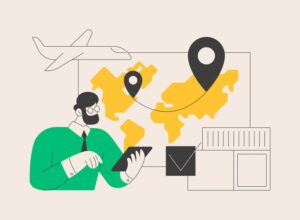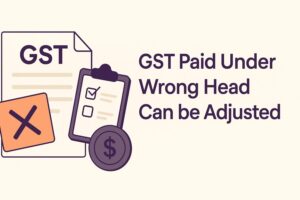High Sea Sales Under GST
- 23 Aug 24
- 11 mins

High Sea Sales Under GST
- Understanding High Sea Sales in GST
- Differences Between Regular Imports and High Sea Sales
- GST Implications on High Sea Sales
- Timing of GST Levy on High Sea Sales
- Valuation for GST Levy on High Sea Sales
- Required Documentation for High Sea Sales
- Eligibility of Final Buyer to Claim Input Tax Credit on High Sea Sales
- Advance Rulings Pertaining to High Sea Sales in GST
Key Takeaway
- High Sea Sales involve transferring ownership of goods while they are still on the high seas, and these transactions are considered non-GST supplies until the goods enter Indian territory.
- Unlike regular imports, high sea sales require meticulous documentation, including endorsed bills of lading and detailed commercial invoices, to ensure compliance and smooth customs clearance.
- GST is levied on high sea sales at the time of importation when the goods cross Indian customs frontiers, and the subsequent buyer must pay the applicable GST and custom duties.
- Proper valuation of high sea sales for GST purposes includes the cost of goods, freight, insurance, and other charges incurred up to the point of importation.
- The final buyer can claim input tax credit on GST paid at the time of importation, provided the goods are used for business purposes and all GST regulations are complied with.
Understanding High Sea Sales in GST
High Sea Sales (HSS) under GST refer to sales transactions where the goods are sold while they are still on the high seas, before reaching the customs frontiers of India. In this type of transaction, the original buyer, who has entered into a sale agreement with the foreign supplier, sells the goods to a subsequent buyer before the goods are imported into India. The ownership of the goods changes hands through the endorsement of documents of title, such as the bill of lading, while the goods are still in a non-taxable territory. These sales are considered non-GST supply or exempt supply since the goods are not yet within the taxable territory of India.
High Sea Sales are an important aspect of international trade as they allow flexibility and convenience for buyers and sellers. The sale agreement between the original buyer and the subsequent buyer typically includes details about the transfer of ownership, commercial invoices, and the terms of sale. Understanding the implications of HSS under GST is crucial for businesses engaged in such transactions, as it affects their tax liability and compliance requirements.
Differences Between Regular Imports and High Sea Sales
The key difference between regular imports and high sea sales lies in the timing and nature of the sales transactions. In regular imports, the original importer takes possession of the goods after they have cleared Indian customs and pays applicable custom duties and GST. The goods are then sold domestically as interstate or intrastate purchases, depending on the buyer's location.
In contrast, high sea sales occur before the goods reach Indian customs. The original buyer, who imports the goods, sells them to a subsequent buyer while the goods are still in transit. The sale transaction is completed through the endorsement of documents of title, such as the bill of lading. The subsequent buyer becomes the new importer and is responsible for paying custom duties and GST upon the goods' arrival at the original destination.
The timing of importation and the handling of GST differ significantly between the two types of transactions. Regular imports are considered outward supplies subject to GST, whereas high sea sales are treated as exempt supplies or non-GST outward supplies until the goods enter the taxable territory.
GST Implications on High Sea Sales

High Sea Sales are considered non-GST supplies since the transaction occurs outside the taxable territory of India. As a result, GST is not applicable on the sale transaction between the original buyer and the subsequent buyer while the goods are still on the high seas. However, once the goods enter the customs frontiers of India, the subsequent buyer, now the importer, must pay custom duties and GST on the importation of goods.
💡If you want to pay your GST with Credit Card, then download Pice Business Payment App. Pice is the one stop app for all paying all your business expenses.
The GST implications on high sea sales include the treatment of the transaction as an exempt supply or non-GST supply in the seller's GST returns. The original buyer must ensure that the high sea sales are accurately reported in their outward supply section, indicating them as non-GST outward supplies. This classification is crucial for compliance and to avoid any tax liabilities arising from incorrect reporting.
Additionally, the subsequent buyer, upon receiving the goods, must include the purchase in their GST returns under the appropriate headings, such as interstate supplies or warehouse supply, depending on the nature of their business operations.
Timing of GST Levy on High Sea Sales
The timing of GST levy on high sea sales is critical in determining the tax liability of the involved parties. GST is not applicable on the high sea sales transaction itself as it occurs outside Indian territory. However, the levy of GST becomes applicable at the time of importation when the goods cross the customs frontiers of India and are cleared for home consumption.
The subsequent buyer, who becomes the importer, must pay GST along with the custom duties at the time of clearance of the goods. This point of taxation is essential as it marks the transition from a non-taxable territory to a taxable territory. The charge applicable at this stage includes both GST and custom duties, and the importer must ensure compliance with all applicable laws.
Understanding the time of levy is crucial for businesses to manage their cash flows and ensure timely payment of taxes. Proper documentation, including commercial invoices and customs declarations, is necessary to substantiate the timing of importation and the associated tax liabilities.
Valuation for GST Levy on High Sea Sales

The valuation for GST levy on high sea sales is based on the value of the goods at the time of importation. The value includes the cost of goods, freight, insurance, and any other charges incurred up to the point of importation. This comprehensive valuation is used to calculate the applicable custom duties and GST.
The original sale agreement between the foreign supplier and the original buyer, as well as the subsequent sales agreement between the original buyer and the subsequent buyer, play a crucial role in determining the valuation. The sale invoice must reflect the correct value of the goods, including any additional charges agreed upon during the sale transactions.
Accurate valuation ensures that the correct amount of GST is levied at the time of importation. Businesses must maintain detailed records of all related documents, such as the original agreement, commercial invoices, and endorsements, to substantiate the declared value and comply with GST regulations.
Required Documentation for High Sea Sales
High sea sales require meticulous documentation to ensure compliance with GST regulations and smooth clearance of goods. The essential documents include the original agreement between the foreign supplier and the original buyer, and the subsequent sales agreement between the original buyer and the subsequent buyer.
Other critical documents are the bill of lading, which must be endorsed to transfer ownership, commercial invoices detailing the sale transactions, and any credit notes or other documents of title. Additionally, custom house agents may assist in preparing and submitting the necessary documents for customs clearance.
Proper documentation ensures that the sale transaction is recognized as a high sea sale and not a regular import, thus maintaining the tax benefits associated with such transactions. Businesses must ensure that all documents are correctly endorsed and submitted in a timely manner to avoid any delays or issues during the importation process.
Eligibility of Final Buyer to Claim Input Tax Credit on High Sea Sales
The final buyer, who becomes the importer upon the goods' arrival in India, is eligible to claim input tax credit (ITC) on the GST paid at the time of importation. This eligibility is contingent on the buyer using the goods for business purposes and meeting all other conditions stipulated under GST law.
To claim ITC, the importer must ensure that the GST paid on importation is accurately reflected in their GST returns. The sale invoice, along with other relevant documents, must be retained to substantiate the ITC claim. The input tax credit mechanism allows businesses to offset the GST paid on imports against their GST liability on outward supplies, thereby reducing their overall tax burden.
Proper reporting and documentation are crucial for claiming ITC. Businesses should maintain a clear trail of all transactions and ensure compliance with GST regulations to fully benefit from the input tax credit system.
Advance Rulings Pertaining to High Sea Sales in GST
Advance rulings provide clarity on the tax implications of high sea sales under GST. These rulings, issued by the GST Authority for Advance Rulings, address specific questions raised by businesses regarding the treatment of high sea sales, including the applicability of GST, valuation, and eligibility for input tax credit.
Advance rulings help businesses understand their tax obligations and ensure compliance with GST laws. For instance, a ruling may clarify whether a high sea sale qualifies as a non-GST supply or an exempt supply and the conditions under which the final buyer can claim ITC.
Businesses engaged in high sea sales transactions can seek advance rulings to resolve ambiguities and gain certainty on their tax positions. Staying informed about relevant advance rulings helps businesses align their practices with the latest interpretations of GST law, thereby minimizing the risk of disputes and ensuring smooth operations.




















